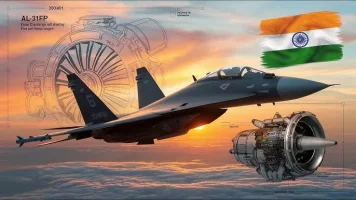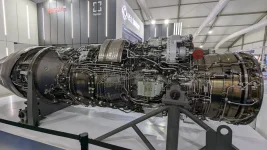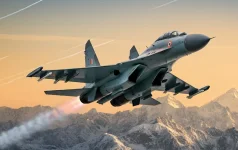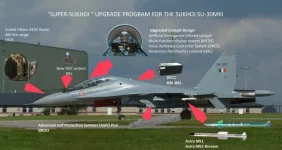- Views: 3K
- Replies: 10
Russia is forging ahead in the development of its sixth-generation fighter aircraft, with the Sukhoi Design Bureau leading the charge.
In a recent announcement, the head of Sukhoi's Design Bureau revealed key details about this ambitious project, emphasizing the critical need for a revolutionary power plant.
This next-generation engine must deliver high thrust while maintaining exceptionally low specific fuel consumption, essential characteristics for meeting the demanding requirements of future air combat.
Sixth-generation fighter jets represent the next leap in military aviation, surpassing current fifth-generation fighters like the F-35 and Su-57. These future aircraft will need to integrate a suite of advanced technologies, including enhanced stealth capabilities, autonomous systems, hypersonic speeds, advanced artificial intelligence (AI), and a networked approach to combat.
The engine is arguably the most crucial component of this new fighter. Sukhoi recognizes that it must be equipped with a power plant capable of delivering exceptional thrust while minimizing fuel consumption. This combination of power and efficiency is vital for ensuring the aircraft can operate at the cutting edge of speed, maneuverability, and endurance.
The need for improved power characteristics stems from the evolving nature of aerial warfare, where speed, agility, and range will be decisive factors. Sixth-generation fighters must be capable of performing supersonic and hypersonic maneuvers at extended ranges without sacrificing fuel efficiency. This presents a significant challenge, as the energy demands of advanced jet engines capable of such feats are substantial.
The proposed low specific fuel consumption will enable the aircraft to operate for extended periods on a single tank, reducing the need for frequent refuelling during missions. This, combined with high thrust, would provide the fighter with superior speed and maneuverability in a wide range of combat scenarios.
Sukhoi's design team is actively pursuing advanced technologies that will allow for efficient fuel use without compromising performance. A next-generation engine capable of producing thrust comparable to current engines but with significantly improved fuel efficiency is crucial for maintaining the fighter's operational versatility. This will not only enhance its air superiority capabilities but also extend its effectiveness in multirole missions, including ground strikes and reconnaissance.
The Sukhoi Design Bureau has a long and distinguished history of developing world-class aircraft, including the Su-27, Su-30, and Su-57. Their commitment to pushing the boundaries of aerospace technology is evident in their focus on sixth-generation capabilities.
The development of this new fighter jet is of paramount importance to Russia's defence posture and geopolitical influence. As nations like the United States, China, and India continue to invest in advanced fighter aircraft programs, Russia's sixth-generation fighter will be a formidable contender in the race for air dominance.




